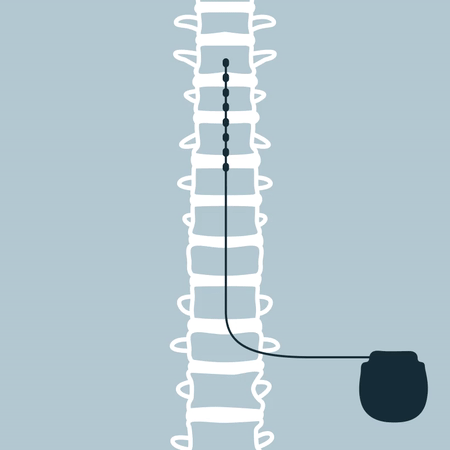Thank you! Based on your results
You could be a Good Candidate for Neuromodulation
Schedule your visit today to receive a precise diagnosis and treatment plan from our award-winning physicians!
Reduced Pain Reduced Reliance on Opioids Increased Activity High Patient Satisfaction
Neuromodulation
Minimally Invasive.
Non-Surgical.
Research shows that neuromodulation results in meaningful pain relief in 50-70% of well-selected chronic pain patients that have failed to respond to other treatments.
Our goal is to reduce or eliminate the reliance on opioids for pain management.
This procedure is covered by most commercial insurances and Medicare.
Frequently Asked Questions
About Neuromodulation
Covered by Most Insurances and Medicare



Enjoy 1-on-1 Guidance and Support From Your Personal PainPoint Care Coordinator
- Free 20-minute call with a Care Coordinator
- Free 20-minute call with a Care Coordinator
- Free 20-minute call with a Care Coordinator
How it Works
The stimulator consists of a small battery pack and thin wires, called leads.
The leads are placed under the skin and next to the spinal cord. The battery back, also called a “pulse generator,” is programmed to send gentle electrical pulses through the leads to disrupt pain signals before they reach your brain.
These devices have been developed over decades, with hundreds of millions of dollars in R&D. This is not a TENS unit.


The device is placed under the skin in a same-day, outpatient procedure.
Every patient gets to “trial” a temporary stimulator for up to 1 week to see if it reduces pain and improves daily life.
The trial is a simple, outpatient procedure that takes about 30-minutes in the doctor’s office.
The stimulator interrupts pain signals before they reach the brain, reducing pain and improving function.
When you feel pain, it’s because nerves are sending pain signals to your brain. Spinal cord stimulation interrupts these pain signals so you don’t perceive them as pain. The goal of spinal cord stimulation is to:
Reduce pain by at least 50%
Improve mobility and allow daily activities
Reduce the need for pain medication
Allow patients to relax and sleep better

Real Patient Stories
“The time that I’m able to spend with my grandchildren doing activities — I’m very grateful to have that back in my life.”

Tammy
Medtronic Stimulator
“Having the stimulator has relieved the burden from my mind of constantly having to worry about my pain.”

Bryan
Medtronic Stimulator
“I don’t really have any pain anymore. It’s taken me off all my medication completely.”

Robin
Nevro Stimulator
“We like to travel and it allows me to do it again. We can go on the trips we want to go on.”

Rod
Nevro Stimulator
“It changed my life. I wasn’t able to do anything before I had my spinal cord stimulator in.”

Alesia
Boston Scientific Stimulator
However, if you are experiencing pain, you should still consider seeing a pain specialist. Pain specialists treat all types of pain. You can schedule a visit by calling 847-796-8160.
